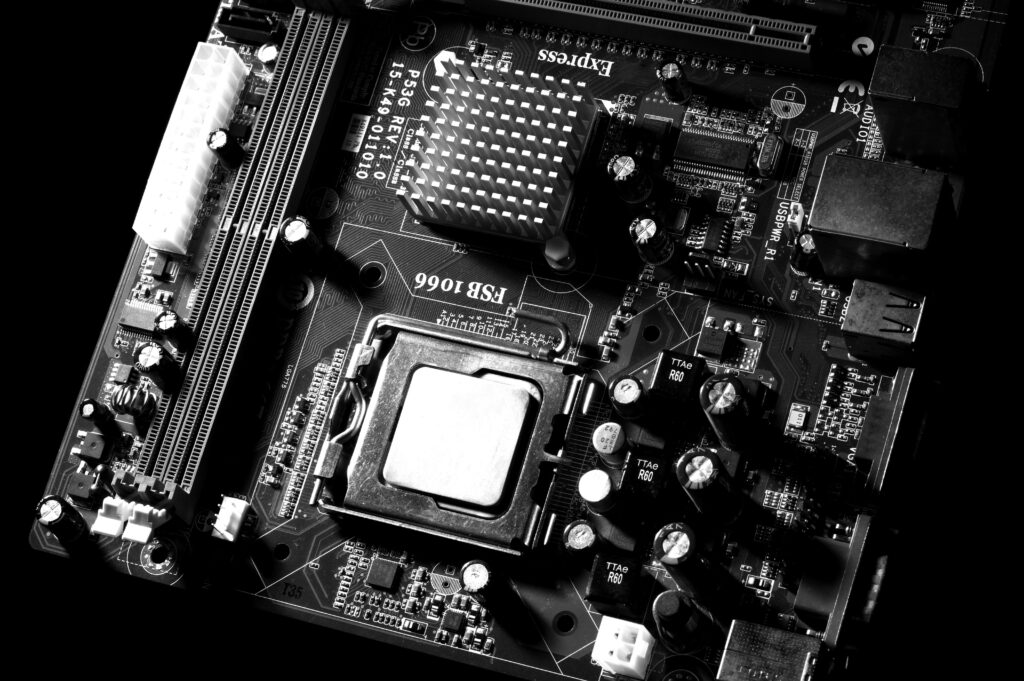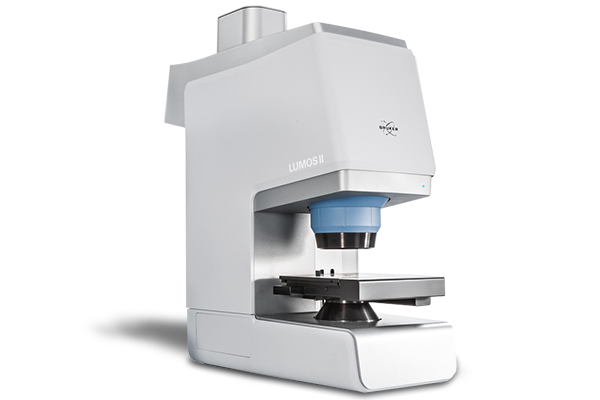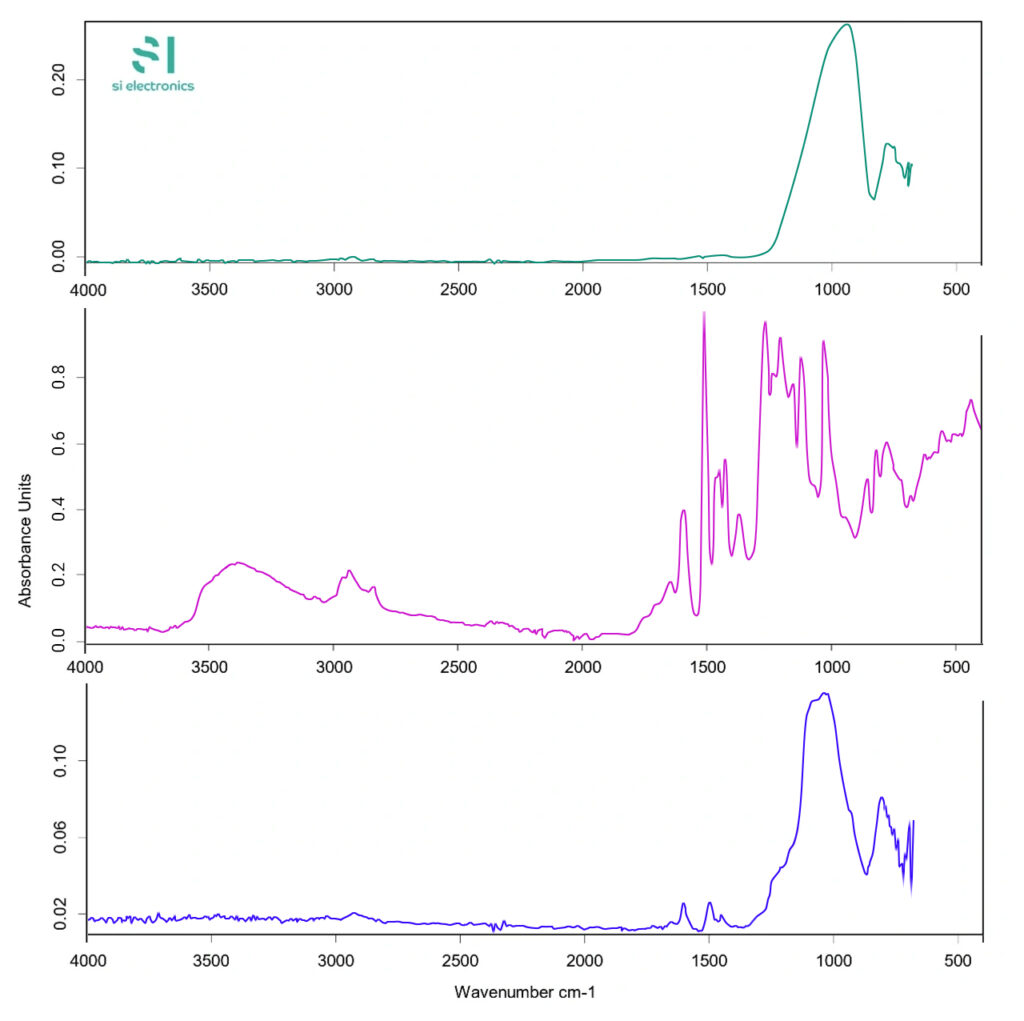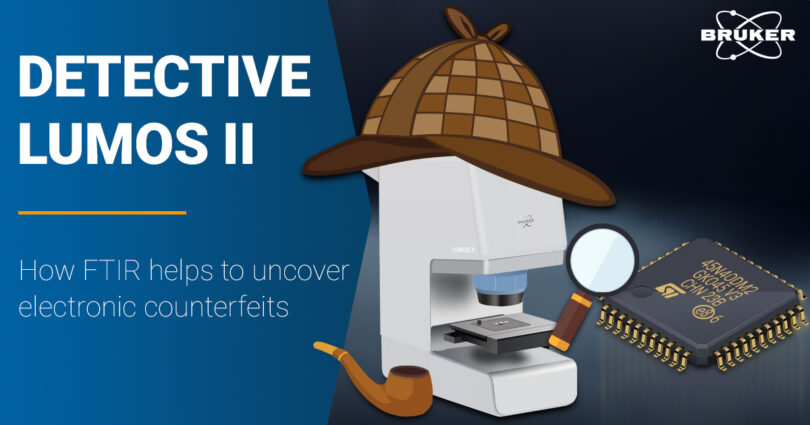FTIR spectroscopy detects counterfeit electronics fast and effectively.[1] It provides a critical solution in the fight against counterfeit products that threaten various sectors of our economy. As counterfeits infiltrate industries like fashion, pharmaceuticals, and luxury goods, they pose serious risks.
With the advancement of technology, counterfeit components in electronics are becoming increasingly problematic. By compromising on quality, these fraudulent parts lead to more frequent defects, posing significant risks and potentially endangering customer safety. SI Electronics is at the forefront of addressing this challenge, utilizing Bruker FTIR spectrometers to safeguard product integrity and ensure the safety of customers in the face of the growing counterfeit electronics issue.

Blacktopping
One way of counterfeiting electronic parts is a process called blacktopping. Originally, the term referred to the application of a coating on electronic parts to update the information inscribed on them or to add new information. However, by now, blacktopping often refers to the intentional covering of original manufacturer part markings on the integrated circuit packaging.
It involves sanding off the original marks, applying a coat of polymer and then adding a false label. The products are then marketed as if they are new and original – even though they are actually either second-hand or of inferior quality. Because this can compromise the integrity and reliability of the parts, the method can lead to malfunctions and safety risks.
Advanced blacktopping technique
As the industry develops methods to expose blacktopping, counterfeiters are using more advanced techniques to avoid detection. Instead of just applying a thin polymer coat, they mix removed material with epoxy resin to mimic the original casting.
In this case, basic methods like solvent testing (shown in the figure below) are no longer effective. This highlights the need for advanced detection methods – a spectral Sherlock Homes if you will!

Detective LUMOS II: At your service!
FTIR spectrometers, such as the Bruker LUMOS II, are used to expose counterfeits in a variety of industries. By unravelling the chemical composition of a presumed counterfeit product the measured material can be exposed as a counterfeit by comparing it to a reference.

FTIR Detection of Blacktopping
To understand how FTIR can aid in revealing advanced blacktopping, it is crucial to know how the original casings, that protect the microchip inside, are composed. They consist of a very enduring mixture of industrial ash (mainly fused silica) with minor amounts of epoxy resin.
This mixture is shaped into its final shape using injection molding. This process is necessary to achieve a uniform distribution of the components and adequate curing of the casting material. In the following Figure, the FTIR spectra of industrial ash (green), epoxy resin (violet), and an original casting compound (blue) are shown.

It becomes apparent that the “industrial ash” bands are much more prominent than those of the epoxy resin in the original casting compound. They epoxy resin bands only appear in the region of around 1500 cm-1. This is due to the much lower concentration of the epoxy resin in comparison to the industrial ash.
Now when counterfeiters remove this very specific mixture and reapply it, the newly applied material now contains much more epoxy than the original casting compound. An elementary flaw that can be observed in the FTIR spectra through intensified epoxy resin bands.
Let’s test our hypothesis, dear reader.
In the example below we see a comparison between a reference spectrum of an original casting (blue) and a casting that was manipulated through blacktopping (red).

The counterfeit shows prominent peaks in the area around 2900 cm-1 and between 2700 and 1000 cm-1. These belong to the additionally added epoxy resin and are not so prominently present in the original part.
Conclusion
Standard methods defined by norms are highly effective at detecting counterfeit or tampered electronic components. However, these methods have limitations when faced with new, solvent-resistant counterfeiting techniques. FTIR spectroscopy can accurately detect such counterfeits with relatively minimal effort. A key advantage of this method is that it is non-destructive in reflection mode, allowing for the examination of larger batches of components. Additionally, it ensures thorough testing of costly components to guarantee the reliability of the final product.
We would like to extend our thanks to Dr. Paul Braun, Director Quality Control & Research at SI Electronics, for supplying information and spectra.
[1] Braun, P. (2024, 16th April). FTIR-Spektroskopie: Neue Wege zur Erkennung gefälschter Chips. SI Electronics. Retrieved on September 17th, 2024 [https://www.elektroniknet.de/halbleiter/neue-wege-zur-erkennung-gefaelschter-chips.215905.html].Would you like to know more about uncovering counterfeits with FTIR? Then go ahead and read our blog on unmasking counterfeits fabrics:








